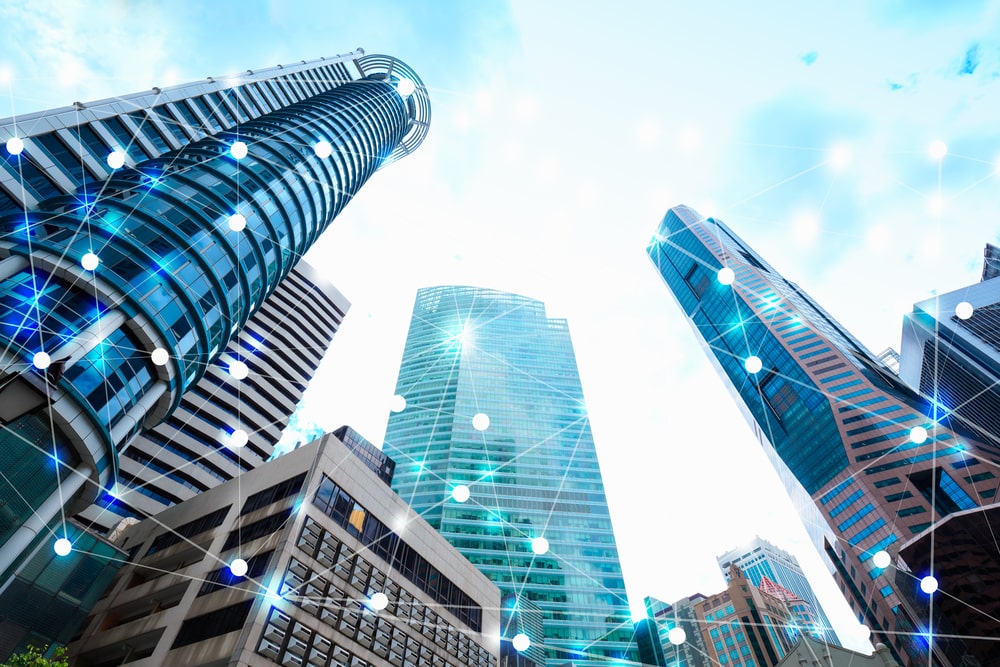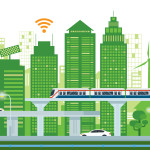Features - Business
The advantages of using smart technology in commercial buildings

As the UK Government pledges to reach net zero greenhouse gas emissions by 2050, the urge for sustainable buildings is stronger than ever. According to the UK Green Building Council, an estimated 40% of the UK’s carbon footprint is attributed to the built environment, half of which comes from energy used in building. Heating alone created 10% of the country’s carbon footprint.
Yet sustainability is still out of reach for many property owners and managers. Old buildings, small budgets, tenants’ varying needs – there are many factors that make it hard for a property manager to truly measure the sustainability of a building and to act upon any findings.
Considering this, Frankie Bryon, Sustainability Surveyor at LSH discusses why smart technology can help buildings improve on sustainability as well introduce other benefits that include promoting health and wellbeing and enable agile working.
Smart is sustainable
Firms’ sustainability strategies have been a major driver of the rollout of smart technology. By providing more efficient controls over energy usage, it can deliver significant reductions in energy consumption.
It is no coincidence that some of the smartest office buildings in the world are also rated by BREEAM as among the greenest. Smart systems allow lighting, heating, air conditioning and ventilation to be monitored and adjusted according to a building’s usage and occupation. Energy wastage can be minimised by turning off heating and lighting when an office is unoccupied. Intelligent building facades may also be used to control the heat and light entering the building in response to changing weather conditions.
The next generation of energy efficient smart buildings have their own sources of power generation and some are even able to generate more energy than they consume, with surplus energy going back to the grid.
Workplace wellbeing
Smart technology is increasingly recognised as having an important role to play in promoting health and wellbeing. It can help to create environments that support alert, energised workforce.
Sensors can monitor air and water quality, light, temperature and noise levels. Issues known to affect workers’ concentration levels such as poor air quality or a lack of natural light can thus be detected and fixed.
More advanced smart office technology can also make use of data from wearable biometric devices monitoring the health and comfort of workers. In fact, research by Instant Offices shows 45% of the UK workforce would feel comfortable with sharing information via wearable devices for the purpose of protecting their health and wellbeing.
Ambient conditions can be adjusted when workers show signs of discomfort, or an individual’s immediate working environment can be changed according to their personal preferences.
Work smarter
Sensors, smartphones or wearable devices may collect data monitoring environmental factors such as temperature, light, air quality and noise, as well as data on employees’ usage of the building.
The data collected can deliver building managers with actionable insights on how to improve a building’s performance, or it may feed through to automated systems controlling the office environment. With smart technology continually evolving, it is being used to support an increasingly wide range of applications, providing multiple benefits to building owners, investors, occupiers and employees.
Enabling agile working
Smart technology is providing occupiers with a better understanding of who uses the office at any given time, how they work and with whom they collaborate. These insights can enable increasingly agile, flexible working.
Some of the newest generation of smart buildings have fewer desks than workers. Instead, employees may reserve a workspace using an app, with a choice of spaces depending on whether they would prefer a collaborative workspace, private meeting area or a quiet space.
Smart systems may thus facilitate a move away from the convention of employees ‘owning’ a desk, which then goes unused for periods when they are out of the office. Flexible workspaces can be used more efficiently and may be continually adapted to changing employee demand and new work styles.
Improving workplace experiences
As well as enabling desk and room bookings, workplace apps can also be used to order food and drink, book gym sessions or reserve parking spaces. They may allow employees to control ambient settings, as well as providing new ways of connecting and collaborating with colleagues.
Workplace apps are thus developing as important interfaces between employees and office buildings, giving individuals greater control over their office experience. This will help to align the modern office with the expectations of a younger workforce for whom smart technology already plays an integral part of their lifestyles outside of work.
The benefits of being smart
Overall the advantages that smart offices offer are in terms of the following:
- Sustainability
- Employee wellbeing
- Agile working
- Workplace experience
Smart offices also aid talent attraction and retention, by creating spaces in which people want to work, while appealing to workers’ environmental values. Modern, sustainable offices can help to reinforce a company’s brand values and define a progressive, forward-thinking corporate culture.
If you would like to read more articles like this then please click here.
Related Articles
More Features
- Ten years of progress on payment, pre-qualification and skills
19 May 25
The industry has made significant progress on late payment, pre-qualification, and competence since the formation
- Pagabo provides clarity on impacts of new NPPS and PPNs
12 Mar 25
The Labour government’s new National Procurement Policy Statement (NPPS) sets out strategic priorities for public
- How is the Procurement Act going to drive social value
24 Feb 25
The regulations laid out within the Procurement Act 2023 will go live today.






